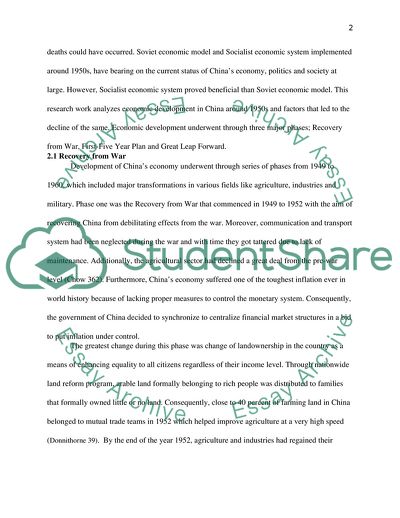Cite this document
(Economic Development in China in the 1950s Research Proposal Example | Topics and Well Written Essays - 2500 words, n.d.)
Economic Development in China in the 1950s Research Proposal Example | Topics and Well Written Essays - 2500 words. https://studentshare.org/history/1866382-the-process-of-economic-development-its-effects-in-china-in-1950s-study-of-three-major-phases-during-1949-1960
Economic Development in China in the 1950s Research Proposal Example | Topics and Well Written Essays - 2500 words. https://studentshare.org/history/1866382-the-process-of-economic-development-its-effects-in-china-in-1950s-study-of-three-major-phases-during-1949-1960
(Economic Development in China in the 1950s Research Proposal Example | Topics and Well Written Essays - 2500 Words)
Economic Development in China in the 1950s Research Proposal Example | Topics and Well Written Essays - 2500 Words. https://studentshare.org/history/1866382-the-process-of-economic-development-its-effects-in-china-in-1950s-study-of-three-major-phases-during-1949-1960.
Economic Development in China in the 1950s Research Proposal Example | Topics and Well Written Essays - 2500 Words. https://studentshare.org/history/1866382-the-process-of-economic-development-its-effects-in-china-in-1950s-study-of-three-major-phases-during-1949-1960.
“Economic Development in China in the 1950s Research Proposal Example | Topics and Well Written Essays - 2500 Words”. https://studentshare.org/history/1866382-the-process-of-economic-development-its-effects-in-china-in-1950s-study-of-three-major-phases-during-1949-1960.


